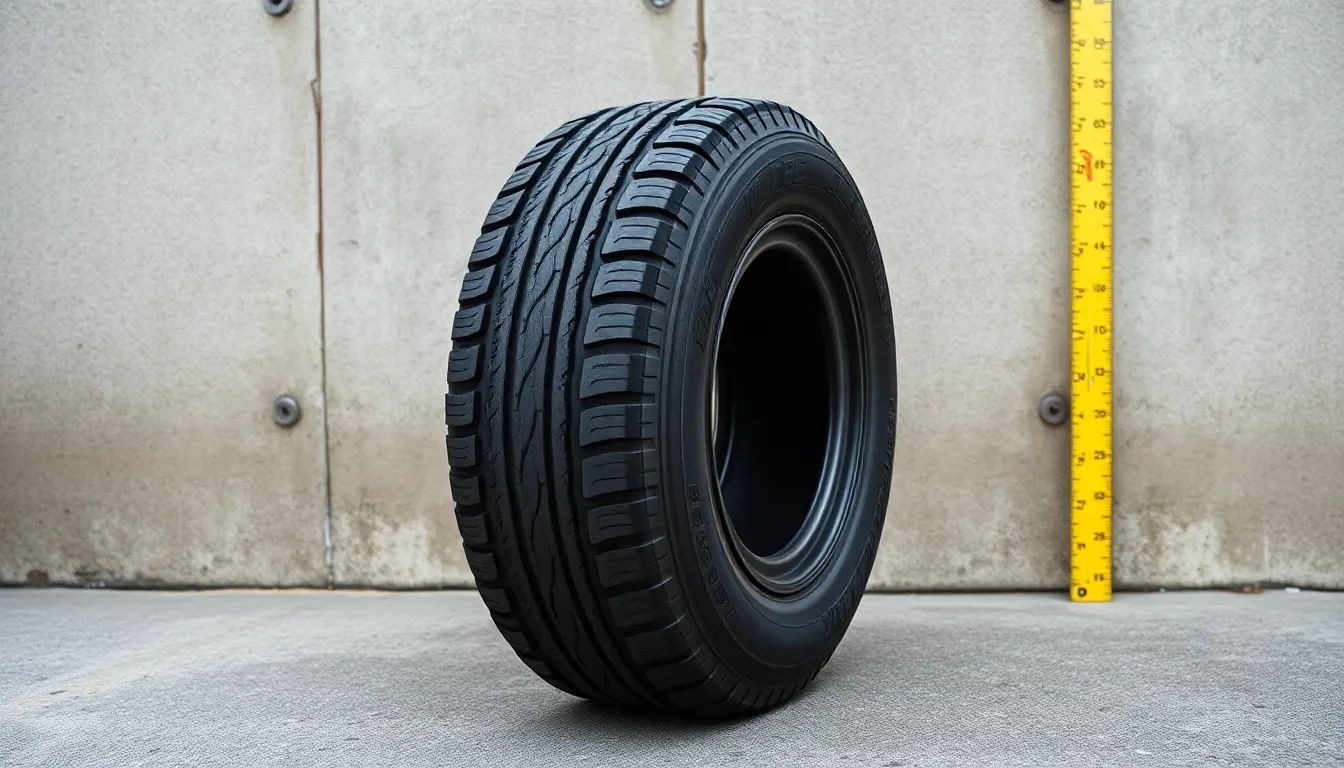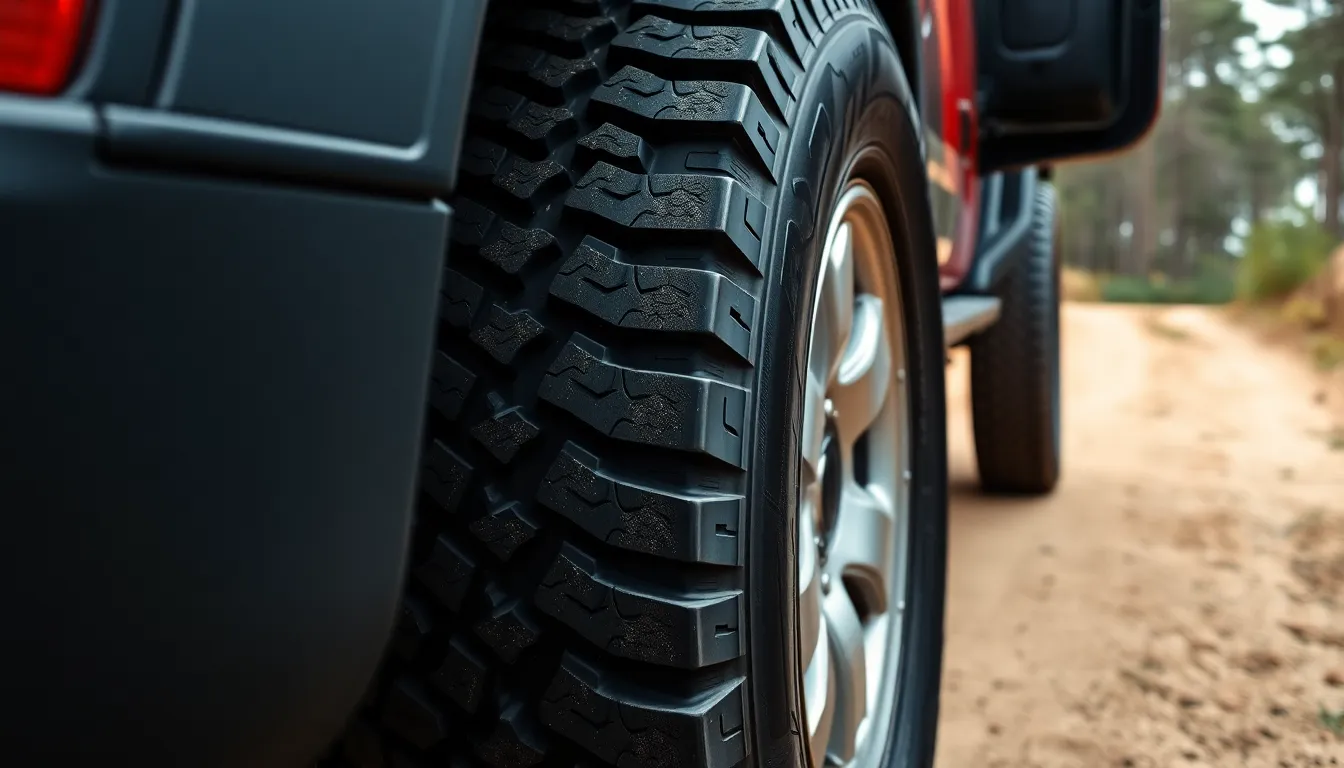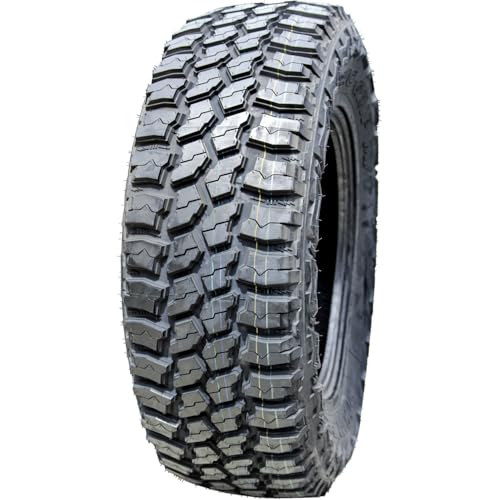When we’re shopping for new tires or planning modifications to our vehicles, understanding tire dimensions becomes crucial. The 235/75R15 tire size is one of the most common configurations you’ll encounter, especially on trucks, SUVs, and some passenger cars.
We’ve all been there – staring at those cryptic numbers on our tire sidewalls and wondering what they actually mean. The height of a 235/75R15 tire directly impacts your vehicle’s ground clearance, speedometer accuracy, and overall performance. Getting this measurement wrong can lead to clearance issues or affect your driving experience.
Understanding tire height isn’t just about numbers on paper. We need to know the real-industry implications of choosing this tire size, from how it affects our daily driving to whether it’ll fit properly in our wheel wells. Let’s break down exactly how tall a 235/75R15 tire stands and what that means for your vehicle.
Understanding Tire Size Specifications
Tire size specifications follow a standardized format that reveals critical dimensions and characteristics. We decode these markings to determine exact measurements and compatibility requirements for our vehicles.
Decoding the 235/75R15 Format
The 235/75R15 designation contains three distinct components that define tire dimensions and construction. Each element provides exact information about width, sidewall ratio, and wheel compatibility.
235 represents the tire width measured in millimeters from sidewall to sidewall. This measurement indicates the contact patch width when the tire mounts on a recommended rim width.
75 indicates the aspect ratio as a percentage of the tire width. The sidewall height equals 75% of the 235mm width, creating a sidewall height of 176.25mm.
R designates radial construction where cord plies run perpendicular to the direction of travel. Radial tires offer improved fuel economy, longer tread life, and better heat dissipation compared to bias-ply alternatives.
15 specifies the wheel diameter in inches that the tire fits. This measurement represents the inner diameter of the tire bead where it seats against the rim.
What Each Number Represents
| Component | Value | Measurement | Description |
|---|---|---|---|
| Width | 235 | Millimeters | Tire width from sidewall to sidewall |
| Aspect Ratio | 75 | Percentage | Sidewall height as percentage of width |
| Construction | R | Type | Radial cord ply arrangement |
| Wheel Diameter | 15 | Inches | Inner diameter for rim fitment |
Width measurements directly affect vehicle stability and cornering performance. Wider tires like the 235mm provide increased contact area but may reduce fuel efficiency.
Aspect ratio determines sidewall flexibility and ride comfort characteristics. The 75% ratio creates a relatively tall sidewall that absorbs road irregularities effectively.
Construction type influences tire performance across multiple parameters. Radial construction delivers superior handling, durability, and heat resistance for modern driving conditions.
Wheel diameter establishes compatibility with exact rim sizes. The 15-inch specification limits fitment to wheels with matching internal diameter measurements.
Calculating the Height of a 235/75R15 Tire

We can determine the exact height of a 235/75R15 tire through a straightforward calculation process. The total height reaches approximately 28.9 inches when we account for both the sidewall and rim dimensions.
Step-by-Step Height Calculation
Calculating tire height requires three essential measurements from the tire designation. First, we identify the tire width of 235 millimeters from the first number in the size specification. Second, we apply the aspect ratio of 75% to determine sidewall height as a percentage of the tire width. Third, we add the 15-inch wheel diameter to complete the total height calculation.
The sidewall height measures approximately 6.9 inches based on our calculations. We multiply the tire width in inches (9.25) by the aspect ratio as a decimal (0.75) to reach this measurement. Adding the sidewall height to both the top and bottom of the 15-inch rim gives us the complete tire diameter of 28.9 inches.
Converting Millimeters to Inches
Converting the 235-millimeter width to inches forms the foundation of our height calculation. We divide 235 by 25.4 since each inch contains exactly 25.4 millimeters. This conversion yields approximately 9.25 inches for the tire width.
The aspect ratio calculation follows immediately after the width conversion. Multiplying 9.25 inches by 0.75 (the 75% aspect ratio) produces the 6.94-inch sidewall height. Doubling this sidewall measurement and adding the 15-inch rim diameter confirms our total tire height of 28.9 inches.
| Measurement | Value | Calculation |
|---|---|---|
| Tire Width (mm) | 235 | Given specification |
| Tire Width (inches) | 9.25 | 235 ÷ 25.4 |
| Aspect Ratio | 75% | Given specification |
| Sidewall Height | 6.9 inches | 9.25 × 0.75 |
| Rim Diameter | 15 inches | Given specification |
| Total Tire Height | 28.9 inches | (6.9 × 2) + 15 |
Physical Dimensions and Measurements

The 235/75R15 tire’s physical measurements provide essential data for vehicle compatibility and performance assessment. We’ve compiled precise specifications to help you understand the exact dimensions of this popular tire size.
Overall Diameter Specifications
The overall diameter of a 235/75R15 tire measures approximately 28.88 to 28.9 inches from ground contact to the highest point. This measurement encompasses the complete tire assembly including both sidewalls and the tread area. Vehicle manufacturers use this diameter specification to determine ground clearance requirements and ensure proper wheel well fitment.
The circumference spans 90.7 inches around the tire’s outer edge. This dimension directly affects odometer readings and speedometer accuracy across different vehicle applications. Our calculations show that 235/75R15 tires complete approximately 699 revolutions per mile during normal driving conditions.
Sidewall Height Details
The sidewall height measures approximately 6.94 to 6.9 inches from the rim edge to the tread surface. This vertical measurement represents 75% of the tire’s 235mm section width according to the aspect ratio specification. Sidewall dimensions affect ride comfort characteristics and vehicle handling response during cornering maneuvers.
Section width spans 9.3 inches across the tire’s widest point when properly mounted and inflated. This measurement determines the tire’s contact patch with road surfaces and influences traction capabilities. The recommended rim width range varies between 6 to 8.5 inches for passenger vehicle applications and 6 to 7 inches for light truck installations to maintain optimal tire performance and safety standards.
Comparing 235/75R15 to Other Common Tire Sizes

Understanding how the 235/75R15 stacks against similar tire sizes helps us make informed decisions about replacements and upgrades. Different tire dimensions create notable variations in vehicle performance and compatibility.
Size Comparison Chart
We’ve compiled precise measurements for popular 15-inch tire sizes to illustrate the dimensional differences:
| Tire Size | Diameter (inches) | Width (inches) | Wheel Diameter (inches) |
|---|---|---|---|
| 235/75R15 | 28.9 | 9.3 | 15 |
| 265/75R15 | 30.66 | 10.43 | 15 |
| 30/9.5R15 | 30 | 9.5 | 15 |
The 265/75R15 measures 1.78 inches taller than our 235/75R15 baseline, reaching nearly 30.7 inches in total diameter. Meanwhile, the 30/9.5R15 stands exactly 1 inch taller at 30 inches, creating a 3.7% speedometer difference when swapped directly with the 235/75R15.
Width variations prove equally important across these sizes. The 265/75R15 spans 10.43 inches compared to the 235/75R15’s 9.3-inch width, representing a substantial 1.13-inch increase in contact patch. Conversely, the 30/9.5R15 measures only 9.5 inches wide, falling between the other two options.
Performance Differences by Height
Height variations between these tire sizes create distinct performance characteristics that affect daily driving experiences.
Our 235/75R15 baseline delivers excellent on-road traction and wet weather performance through its narrower profile. The reduced tread width and lower height combination improves fuel efficiency while decreasing hydroplaning risks during rainy conditions.
Stepping up to the 265/75R15 transforms vehicle capabilities with its larger contact area providing enhanced grip and stability. This increased footprint excels on loose surfaces like gravel or dirt roads, though the added size typically decreases fuel efficiency compared to the narrower 235/75R15.
The 30/9.5R15 option creates unique considerations with its taller profile potentially affecting tire clearances in wheel wells. Speedometer accuracy becomes a concern when switching from the 235/75R15, as the 3.7% difference translates to noticeable odometer discrepancies over time.
Each height variation influences ride quality differently. Taller tires like the 265/75R15 and 30/9.5R15 provide more sidewall flex, potentially improving comfort over rough surfaces while the shorter 235/75R15 offers more precise handling response.
Applications and Vehicle Compatibility

The 235/75R15 tire serves multiple vehicle applications due to its balanced dimensions and versatile performance characteristics. This tire size accommodates various wheel widths and provides reliable service across different vehicle types.
Popular Vehicles Using 235/75R15 Tires
Trucks and SUVs from major manufacturers commonly use 235/75R15 tires as original equipment. Ford models frequently feature this tire size across multiple truck lines, while Chevrolet incorporates them into various SUV configurations. Jeep vehicles also rely on 235/75R15 tires for their balanced approach to on-road comfort and off-road capability.
The tire size designation indicates compatibility with 15-inch wheels, making it suitable for vehicles designed around this rim diameter. Larger vehicles benefit from the 235mm width and 75% aspect ratio, which provides adequate load capacity while maintaining reasonable ride quality. Vehicle manufacturers select this size when balancing performance requirements with cost considerations.
Load Rating and Performance Considerations
235/75R15 tires accommodate wheel widths ranging from 6 to 8 inches for passenger applications and 6 to 7 inches for light truck versions. Manufacturers engineer these tires to handle substantial loads, reflecting their common use on heavier vehicles like trucks and SUVs.
Performance characteristics depend on exact speed ratings, tread patterns, and load indices that vary between tire manufacturers. The 75% aspect ratio provides adequate sidewall flexibility for comfort while maintaining structural integrity for load bearing. These tires deliver balanced performance for both on-road driving and light off-road use.
Load capacity ratings enable these tires to support the weight demands of larger vehicles without compromising safety margins. The radial construction enhances durability and heat resistance, contributing to extended service life under various driving conditions. Traction capabilities vary based on tread design, with options available for different weather conditions and terrain types.
Practical Implications of Tire Height

Understanding how a 235/75R15 tire’s 28.9-inch height affects vehicle performance helps drivers make informed decisions about their tire choices. This exact dimension creates measurable changes in speedometer readings and driving dynamics.
Impact on Speedometer Accuracy
Speedometer readings become less accurate when you install 235/75R15 tires with their 90.7-inch circumference. The tire completes approximately 699 revolutions per mile compared to smaller diameter options. Your speedometer reads slower than actual speed by about 6.4% because the larger tire covers more ground per revolution.
Odometer calculations also change with the increased tire height. Your vehicle travels farther than the odometer indicates when using these taller tires. Recalibrating the speedometer becomes necessary for accurate speed and distance measurements if you’ve upgraded from significantly smaller tires.
Ground Clearance and Ride Quality
Ground clearance improves with the 235/75R15’s 28.9-inch overall diameter compared to shorter tire options. The increased height provides better obstacle clearance for off-road driving and reduces the risk of undercarriage damage on rough terrain. Vehicles gain approximately 1-2 inches of additional clearance depending on the previous tire size.
Ride comfort increases significantly due to the 6.9-inch sidewall height that represents 75% of the tire’s section width. The taller sidewall acts as additional suspension by absorbing road imperfections and reducing harsh impacts. This cushioning effect becomes particularly noticeable on uneven surfaces and during highway driving where the flexible sidewall smooths out minor road irregularities.
Conclusion
Understanding the 235/75R15 tire’s 28.9-inch height helps us make informed decisions about vehicle compatibility and performance. We’ve seen how this dimension directly impacts everything from speedometer accuracy to ground clearance and ride comfort.
Whether you’re replacing worn tires or considering an upgrade we now know that the 235/75R15 offers a balanced combination of stability comfort and versatility. Its exact measurements make it an excellent choice for trucks SUVs and light commercial vehicles that need reliable performance both on and off the road.
Armed with this knowledge about tire calculations and practical implications we can confidently select the right tire size for our vehicles while understanding exactly how it’ll affect our driving experience.
Frequently Asked Questions
What is the actual height of a 235/75R15 tire?
A 235/75R15 tire has a total height of approximately 28.9 inches (28.88 inches to be precise). This measurement includes the 15-inch rim diameter plus the sidewall height on both top and bottom. The sidewall height is calculated as 75% of the 235mm width, which equals about 6.9 inches per side.
How do you calculate the height of a 235/75R15 tire?
To calculate the height: First, convert the width (235mm) to inches (9.25 inches). Then multiply by the aspect ratio (75%) to get sidewall height (6.94 inches). Finally, add the rim diameter (15 inches) plus two sidewall heights: 15 + (6.94 × 2) = 28.88 inches total height.
What does 235/75R15 mean in tire specifications?
The numbers represent: 235 = tire width in millimeters, 75 = aspect ratio (sidewall height as percentage of width), R = radial construction, and 15 = wheel diameter in inches. This standardized format helps determine tire dimensions and compatibility with your vehicle’s requirements.
How does the 235/75R15 tire height affect speedometer accuracy?
The 28.9-inch height of a 235/75R15 tire can cause speedometer readings to be off by approximately 6.4% compared to standard tire sizes. This means your actual speed may differ from what’s displayed, requiring potential speedometer recalibration for accurate measurements.
What vehicles commonly use 235/75R15 tires?
The 235/75R15 tire size is commonly used on trucks, SUVs, and some passenger cars from manufacturers like Ford, Chevrolet, and Jeep. These tires are suitable for both on-road and light off-road applications, accommodating wheel widths from 6 to 8 inches.
How does tire height affect ground clearance and performance?
The 28.9-inch height of 235/75R15 tires increases ground clearance, enhancing off-road capability and reducing undercarriage damage risk. The taller sidewall also improves ride comfort by better absorbing road imperfections, making for smoother driving on uneven surfaces.
What is the circumference of a 235/75R15 tire?
A 235/75R15 tire has a circumference of approximately 90.7 inches. This measurement affects odometer readings and speedometer accuracy, with the tire completing about 699 revolutions per mile. Understanding circumference helps determine accurate distance and speed calculations.
How does 235/75R15 compare to other common tire sizes?
Compared to a 265/75R15 (wider with enhanced grip but lower fuel efficiency) or 30/9.5R15 (different sizing format), the 235/75R15 offers balanced performance. Each size has different diameter, width, and handling characteristics that affect driving experience and vehicle compatibility.






